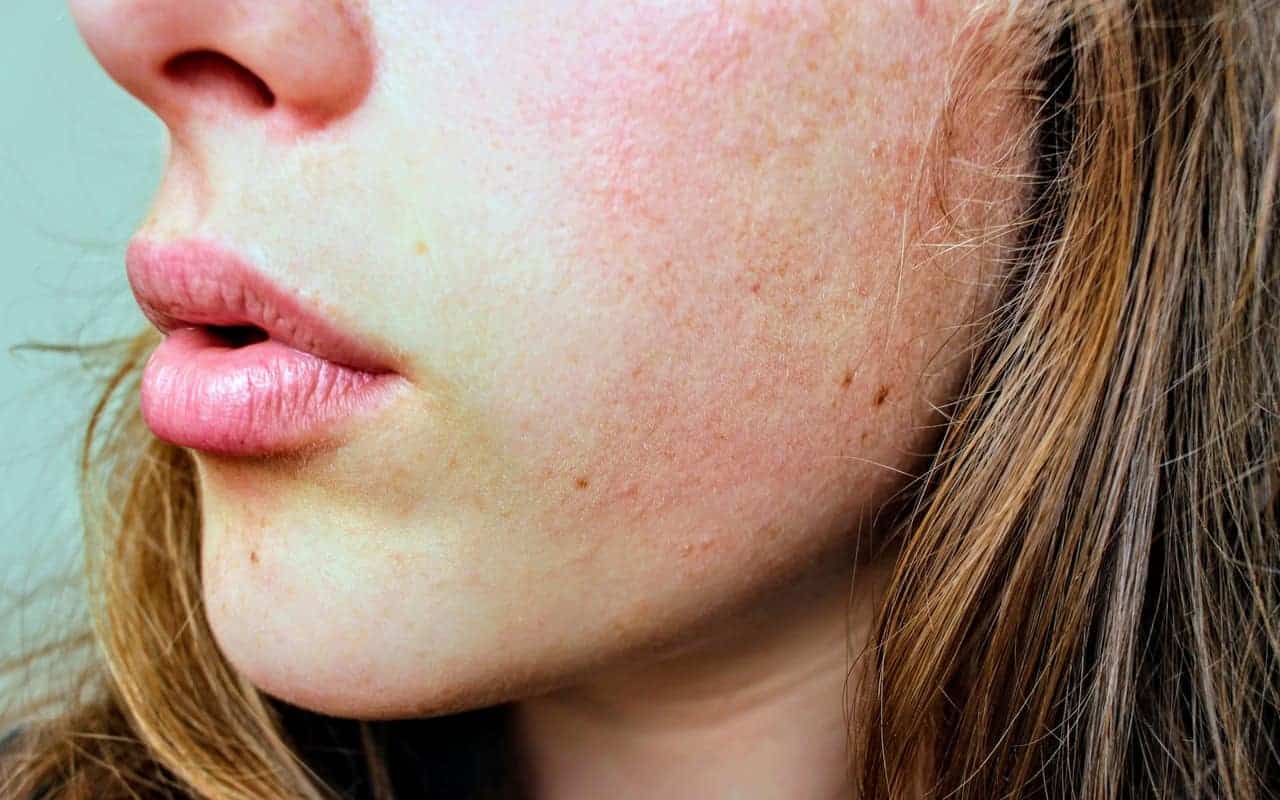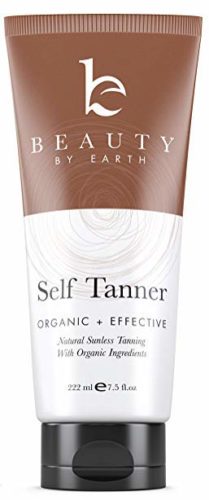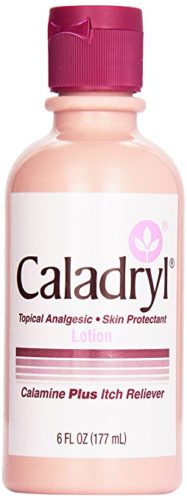Fake tan, or self-tanner, is becoming more and more popular as people recognize the dangers of tanning from the sun. Self-tanners are simple to use, extremely effective, and for the most part, perfectly safe. However, some people do have allergic reactions to fake tan.
So what do you do if you think you are having an allergic reaction to self-tanner? Clean off the product, consider taking an antihistamine or applying calamine lotion, allow your skin to breathe (don’t cover it up), and clean anything else that the self-tanner touched, like towels.
In this article, I want to talk about how this happens, how to recognize that it may be happening, and what you can do about it.
First, let’s just talk a little bit about how most self-tanners work so we can better understand how we can be allergic to it.
Allergic Reactions To Self-Tanners – The Basics
Most quality sunless tanners work through a chemical called dihydroxyacetone, or DHA. What most people don’t know is that DHA is actually a type of sugar that chemically reacts with the amino acids in the very top layer of your epidermis (the outer layer of your skin). This reaction creates a form of a pigment called melanoidin, which is what actually appears as tanned skin.
Another thing that many people don’t think about, is that because DHA is a type of sugar, it can be derived completely naturally (even organically) from sources of sugar like sugar beets or cane sugar. It can also be synthetically produced in a laboratory.
Although synthetically produced DHA is very common and known to be safe, many people have encountered allergy issues. If you do feel as though your skin may be reacting to the self-tanner you’re using, try to instead use an organic, natural self-tanner.
My two favorites and probably the most popular products are the Beauty By Earth self-tanner lotion (organic) and the St. Tropez self-tanning mousse (not technically organic but it is 100% vegan and the bottle is made with recycled materials). However, there are a wide variety of natural and organic self-tanners on the market today.
Just another quick note. If you’re using resources like the Think Dirty App (which is fantastic) that help you to choose natural and safe products, just know that many of these apps don’t differentiate between naturally derived DHA, and synthetic. At least to me, there is a big difference, so just be on the lookout for that.
So Am I Actually Allergic To DHA?
Statistically, probably not.
In fact, only about 2, in every 100,000 people are actually allergic to DHA of any form, synthetic or natural. Usually, your skin is reacting to something else in the product other than the DHA.
For example, many self-tanners have what is called a bronzer, or a guide color. This is usually made out of a combination of food dyes and other colorings. Although this bronzer has coloring in it to help the user know where they’ve already applied the product so they can get a more even tan, it is not what produces the final tan (that is the DHA).
Some people have skin reactions to these dyes but think it is the product themselves. This is another case where it would be good to try a product that is both natural and doesn’t contain a guide color.
So I’m Allergic To Bronzer?
Again, probably not.
I know, I know, you’re starting to think I’m not very helpful, but stick with me. One of the problems when talking about allergies to sunless tanners is that it can be such a large variety of things, from DHA to bronzer, to any other number of things. Some self-tanning products even contain small amounts of alcohol that people can react to.
Ultimately though, almost all “allergic reactions” to fake tanning products are what is called contact dermatitis. The Mayo Clinic defines contact dermatitis as:
“… a red, itchy rash caused by direct contact with a substance or an allergic reaction to it. The rash isn’t contagious or life-threatening, but it can be very uncomfortable. Many substances can cause such reactions, including soaps, cosmetics, fragrances, jewelry, and plants.”
This reaction could be the result of not only the ingredients in self-tanner you’re using but any other number of factors, including your own skin. Our skin is the largest organ of our body and is constantly changing.
Things like our diet and skincare routine can ultimately affect how other products react with it. It also changes over time, so even if you’ve found a product that has worked well for you for a long time, doesn’t mean that you may not have a negative reaction to it down the road.
Alright, now that we’ve talked thoroughly about all the different ways we can have reactions to fake tanning products, let’s talk about some ways to avoid this from happening. After that, we’ll talk about what you can do if you find yourself with a bad reaction.
How To Avoid Skin Reactions To Sunless Tanner
1. Choose A Quality Product
The first and best way to avoid reactions to self-tanners is by choosing a quality product. Although this doesn’t ensure you won’t have a reaction, since every person is different, it will decrease the likelihood of you’re self-tanner containing large amounts of allergins.
Usually, quality products from trusted brands have already been used and tested by millions of people, so you’ll have a general idea if there is something dangerous or annoying in the tanner.
Also, if you often have issues with products with non-natural ingredients, try out a natural or organic self-tanner as it may work better for your skin. There are quite a few quality products like this on the market, but my favorite by far for the price is Beauty By Earth self-tanner that you can get on Amazon.
If lotion isn’t really your thing, then you might like my favorite self-tanning mousse by St. Tropez. It. is perfect for beginners, easy to use, and 100% vegan. You can leave it on for up to 8 hours for a deep glow.
2. Make Sure You Prep
I’ve talked about good self-tanning routines in many of my other articles, so I won’t go into too much detail. However, it is really important to take care of, and prep, your skin before applying self-tanner for best results.
So, start by taking a shower and gently exfoliating your skin to help to remove excess dead skin cells. This will help the DHA to apply and produce a more even tan.
You also want to try and shave or wax your legs 12-24 hours before applying self-tanner to make sure you don’t have any open pores or cuts from the shaving. If you want tips about shaving before applying self-tanner check out my article here.
After you get out, be sure to moisturize your skin to ensure that it is evenly hydrated.
3. Consider A Patch Test
If you find that your skin often has odd reactions to self-tanners or other products, consider testing just a small patch of your skin somewhere that isn’t normally visible like you’re upper thigh. Give the product around 24 hours to see how it reacts to ensure that your skin doesn’t have a reaction.
Alright, now let’s say you’ve just had a reaction to self-tanner, what can you do?
What To Do If Your Have An Allergic Reaction To Fake Tanner
Disclaimer: Please seek medical assistance if you think it is needed, if your symptoms are worsening or if your reaction is severe. I’m not a doctor so I can’t diagnose your skin reaction or guarantee that what I’ve recommended will work for you. Allergic reactions can be serious.
1. Clean Off The Product
Although you can’t wash off self-tanning products in the traditional sense after they’ve had time to react with your skin, it is still the best step to jump in the shower and gently rinse your skin with warm (not hot!) water. Try to use a simple soap that you use often so you know it won’t add to the irritation your skin is experiencing. After you’re done pat the irritated skin dry, we don’t want to make it worse by drying it vigorously.
2. Consider An Antihistamine
If you feel that it’s a true allergic reaction, and not contact dermatitis, consider taking an anti-allergy medicine. Be sure to take it as prescribed and stick to the recommended dose. Also, just like I stated above, I am NOT a doctor and not giving medical advice, so please consult your own physician if you feel that it is necessary.
3. Try Calamine Lotion
Not the best smelling or looking product, but a good quality calamine lotion can be a life-saver when your skin is really itchy and painful. It tends to dry a bit white and can dry out your skin, so I’d suggest applying it right before bed and washing it off in the morning. However, if you’re reaction is really itchy or painful, the relief the lotion brings will probably be worth the slightly odd color.
4. Don’t Confine Your Skin
It’s important to let your skin breathe so it can heal faster. Tight fitting clothes or any kind of rubbing or chafing can make the irritation a lot worse. Try wearing shorts of very loose fitting clothes to allow your skin the chance to heal.
5. Clean Your Sheets
If like myself and many people suggest, you left your fake tanner on overnight, you should really consider changing the sheets. As your body sweats, while you sleep, a bit of the product residue can be left on the sheets and continue to irritate your skin.
Final Thoughts On Allergic Reactions To Fake Tan
Although statistically not super common, it’s completely possible to have an allergic reaction to fake tanning products. One annoying thing is that the reaction can be caused by so many things. So, if you want to avoid this, try the steps listed above and be sure to choose a quality natural self-tanner.
I hope that you found this article, if you did, please consider sharing it!



